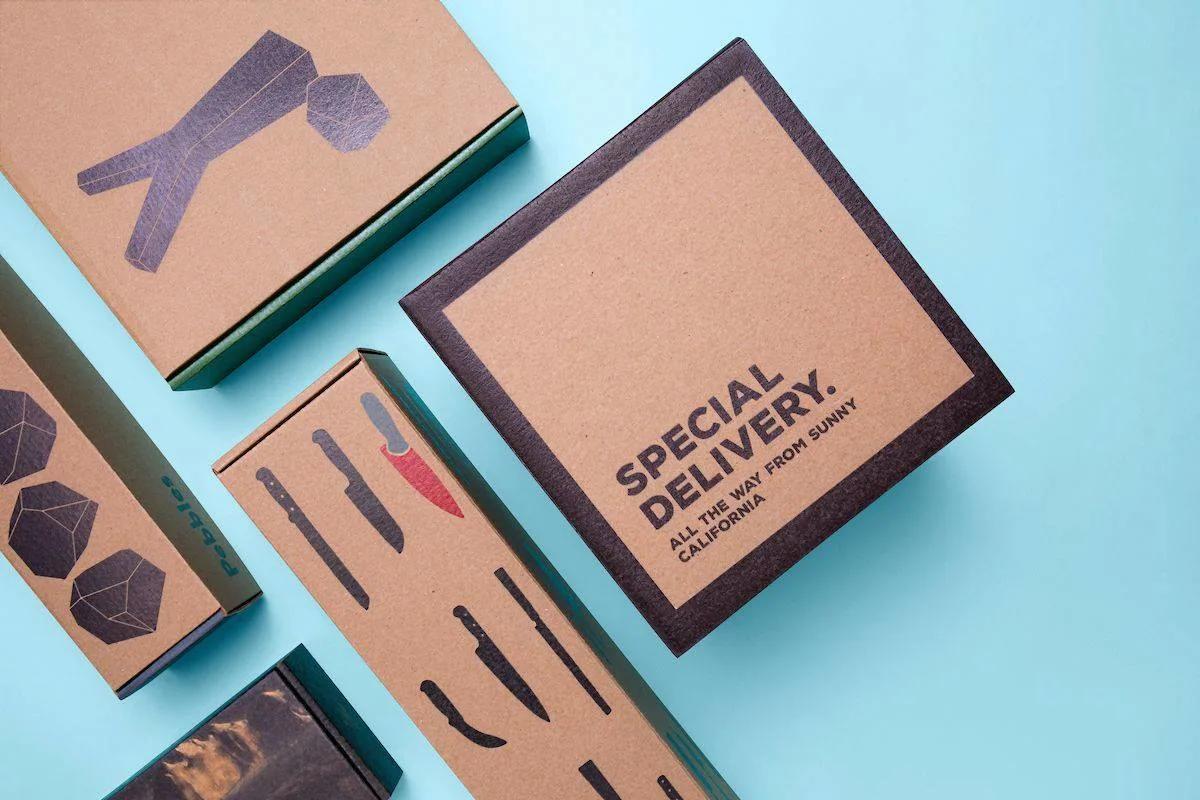How to Choose What to Sell Online: Turn Creativity Into Profit
Wondering what to sell online? Discover how to find profitable products, validate your ideas, and start a business that thrives.
- 19 December 2024
- 2 min read

Let's get real about the biggest question for new entrepreneurs: what should you sell online to make money?
Staring at a blank screen, overwhelmed by endless possibilities, not quite sure what to sell is something every entrepreneur has faced. Here’s the truth: the perfect product doesn’t exist. But your unique path does—it’s where your creativity, skills, and the specific problems you’re best suited to solve converge.
Let’s break it down so you can zero in on the right idea without spinning your wheels.
Why your product choice impacts online business success
Meet Sarah, a digital artist who found herself stuck in the endless scroll of possibilities. While her iPad gathered dust, she spent countless hours researching the "perfect" product line rather than creating. It wasn't until she started small with phone wallpapers that she discovered her true market – busy professionals seeking mindful moments in their day.
Choosing what to sell online isn't just about picking a product. It’s about building a business that hits the intersection of three things:
Finding the place where your passion meets market opportunity.
Identifying high-demand products that you actually want to sell.
Starting a business that you can sustain and energizes you.
Factor 1: Passion alone won't sell money-making products
Consider James, a skilled woodworker whose handcrafted cutting boards were works of art. Despite his incredible craftsmanship and genuine love for woodworking, sales remained stagnant. His breakthrough came when he started hosting virtual workshops, teaching basic woodworking skills – turns out people craved the knowledge behind the craft as much as the products themselves.
Passion isn't just a buzzword—it's your business's backbone. But here's the catch: passion alone won't pay the bills.
⚠️ Warning: Don’t fall into the passion trap
The hard truth is just because you love something doesn’t mean the world is waiting to buy it. We’ve all heard the advice “Do what you love, and you’ll never work a day in your life.” But passion without market understanding is a one-way ticket to a garage full of unsold inventory.
Passion + market research = a real business
The real magic happens at the intersection of what you love and what people actually need. Your passion is the spark, but market research is the fuel. So ask yourself: 1. Are people actually willing to pay for this? 2. What problem is this solving?
Remember, successful businesses don’t just sell products. They solve problems, fulfill desires, and create experiences that resonate with real people. Your passion is important, but it’s the starting point, not the finish line.
The most heartbreaking businesses aren't the ones that fail quickly— they're the ones that slowly fade away, trapped in a bubble of personal vision. Imagine spending years perfecting a product that nobody wants, refusing to hear the market's whispers. It's like talking to a room full of people who have already left and then blaming them for not understanding you.
Treat your product like a starting point, not a finished masterpiece. The key to success? Love your vision, but stay flexible enough to tweak it based on what people actually want. The entrepreneurs who thrive are curious, humble, and responsive to feedback.
Factor 2: Decoding market demand
Meet Alex, a ceramics artist who learned a tough lesson: beautiful products don't sell themselves. After months crafting intricate mugs, he found himself with a garage full of inventory and zero sales. His mistake? Skipping the most crucial step–understanding what people actually want to buy.
Let's be honest. Figuring out market demand can feel like trying to predict the weather with a broken compass. But what if I told you understanding your market doesn't require a business degree or crystal ball?
Here's the truth: Market demand isn't a one-time checklist. It's an ongoing conversation between you, your potential customers, and the ever-shifting marketplace.
Become a demand detective
Think of market research like dating–you're looking for that perfect match between your creativity and customer needs. Here's how to become a demand detective:
1. Use trend-hunting tools
Take Nina, whose sustainable fashion brand nearly launched with last season's aesthetics. By diving into trend forecasting tools and industry reports, she pivoted her designs before it was too late. Instead of following fleeting fads, she identified the growing "capsule wardrobe" movement and created versatile pieces that resonated with conscious consumers.
Free tools are your new best friends. Use tools like Google Trends and Pinterest Trends to gauge changes in search interest over time, identify seasonal trends, or compare popularity of similar items. Pinterest is especially useful for visual or design-related niches like home decor, fashion, or crafts. They also put out a trend report at the end of every year predicting the trends for the next year. If your budget permits, you can also check out paid tools like Etsy Hunt and Jungle Scout which track trending products on Etsy and Amazon. Social media can also be a great source of free product insights. On Instagram’s Explore page you can monitor hashtags and popular posts in your niche. TikTok Creative Center lets you explore trending hashtags and content, and TikTok shop has been exploding especially with younger shoppers.
Spotting trends vs. fads: Find profitable products with staying power
Fads are the marketing world's fleeting summer romances—intense, exciting, but gone in a flash. Think fidget spinners, viral TikTok products, or meme-driven merchandise that explode overnight and disappear just as quickly.
Fad products flood the market with momentary excitement, tied to specific cultural blips that lose steam almost as soon as they begin. It can be a great way to make fast cash—especially for dropshippers and print-on-demand sellers—if you're savvy, but move too slow and you'll miss the wave, ultimately ending up with a boatload of inventory that no one wants anymore.
Trends, however, are the committed relationships of consumer culture—they solve real problems and evolve with genuine needs. Sustainable products, athleisure wear, and personalized digital tools represent deeper shifts that grow gradually and stick around. Unlike fads, true trends adapt, integrate into our lives, and reflect meaningful changes in our lives and work.
2. Find your niche
Meet Morgan, whose jewelry business found its spark in an unexpected place – the outdoor community. By creating pieces specifically for adventurers, like paracord bracelets and compass necklaces for hikers, they transformed from just another jewelry maker into a vital part of the outdoor enthusiast culture.
Finding your perfect market niche is like finding the right pair of shoes—it's not about fitting everyone, but finding the perfect fit for a specific someone. Your ideal customer isn't just a demographic; they're a real person with real, specific needs that your product uniquely solves.
Your ideal opportunity lies where your unique skills, a specific audience's unmet needs, and a problem only you can solve come together. If you can describe your ideal customer in vivid detail—their hopes, challenges, and secret dreams—you're on the right track. The more specific you get, the more powerful your connection becomes.
3. Experiment without breaking the bank
Enter Diego, a hot sauce creator who tested his recipes without risking his savings. Instead of producing thousands of bottles, he started at local farmers' markets with small batches, gathering feedback and building a loyal following. This careful approach helped him refine his products before scaling up, saving both money and heartache.
Let's talk smart product validation. You don't need deep pockets to test a brilliant idea—just some creative strategy. Think of these as your low-risk market research tactics:
Leverage social media for insights: Post your prototypes or mockups and turn your followers into your market research panel. Use stories or videos to showcase your work with engaging polls and open-ended questions.
Run a pre-sale to gauge interest: Create listings for pre-sale items in your shop and drive traffic to them. Set clear expectations around shipping dates and cutoffs to prevent angry customers.
The goal? Connect, learn, and refine–all without risking your entire financial future. Each experiment brings you closer to that breakthrough product.
💎 Pro tip: Approach these experiments with curiosity. Not every test will be a home run, and that's exactly the point.
Factor 3: The feasibility reality check
Look at Jordan, a graphic designer turned small business owner who launched an online store selling custom enamel pins. Initially thrilled by the potential, he soon found himself working marathon nights, barely covering costs, and losing the creative spark that first ignited his dream. His story is a warning many indie creators know all too well.
Let's get real about turning your creative passion into a sustainable business. It's not just about having a great product idea—it's about making that idea work without burning out or breaking the bank.
Avoiding burnout: A feasibility guide for online sellers
Imagine you’re on the cusp of launching your dream product line. The designs are perfect, the market looks promising, and then reality hits. Suddenly, you're drowning in spreadsheets, shipping logistics, and endless to-do lists. Sound familiar?
Feasibility isn't just about money. It's about your most precious resources: time, energy, and creative spirit.
Financial Foundations:
Upfront Investments: Don't just count the obvious expenses. A $15/month storefront might need another $50/month in marketing tools. A $500 initial inventory could also require $250 in packaging and shipping supplies.
Hidden Cost Landmines: Customer service isn't free. Returns can eat into your margins. That cute custom packaging? It all adds up faster than you think.
Profit Margin Reality Check: Calculate your true earnings. If you're making $5 per item but spending hours on production, is it really worth it? You may need to rethink your pricing, but will the market support a price that pays you a fair wage or allows you to outsource production?
Time and Energy Equation:
Realistic Time Mapping: Be brutally honest. Can you realistically dedicate 10 hours a week? 20? Less?
Energy Sustainability: Running your shop shouldn't feel like a soul-sucking side hustle. If producing each item feels like pulling teeth, it's a red flag.
The sustainable sweet spot
High-feasibility products aren't just profitable—they're energizing. They align with your skills, passion, and lifestyle. They leave room for creativity, personal growth, and yes, actual sleep.
Remember, a successful business isn't about working harder. It's about working smarter, staying true to your vision, and protecting the spark that made you start this journey in the first place.
Your creative dream deserves more than just survival. It deserves to thrive. 🫶🏻
Feasibility stress test: ask yourself these critical questions
Can I produce this consistently without sacrificing quality?
Will this product drain my energy or fuel it?
Do I have a support system (or budget) for the non-exciting aspects of the business?
Can I price this to make it worthwhile?
💎 Pro tip: Create a "Burnout Prevention Budget." This isn't just financial—it's an energy budget. Set clear boundaries. Plan for breaks. Build in buffer time for unexpected challenges.
Scoring your product ideas
Now that you know the 3 factors, what do you do with them? Here's how to narrow down your ideas.
Start a list of all the product ideas you have and score each of them on a scale of 1-10 for passion, demand, and feasibility.
Add up your scores. The highest-scoring idea? That's your starting point!
Next Steps
Find a supplier to create your new product or explore print-on-demand options
Show off your new products with great product photography
Make a plan to promote your new product
Design great packaging to delight your customers
Dial in your shipping to ensure things get there safely, for the best price
19 December 2024
- Share


